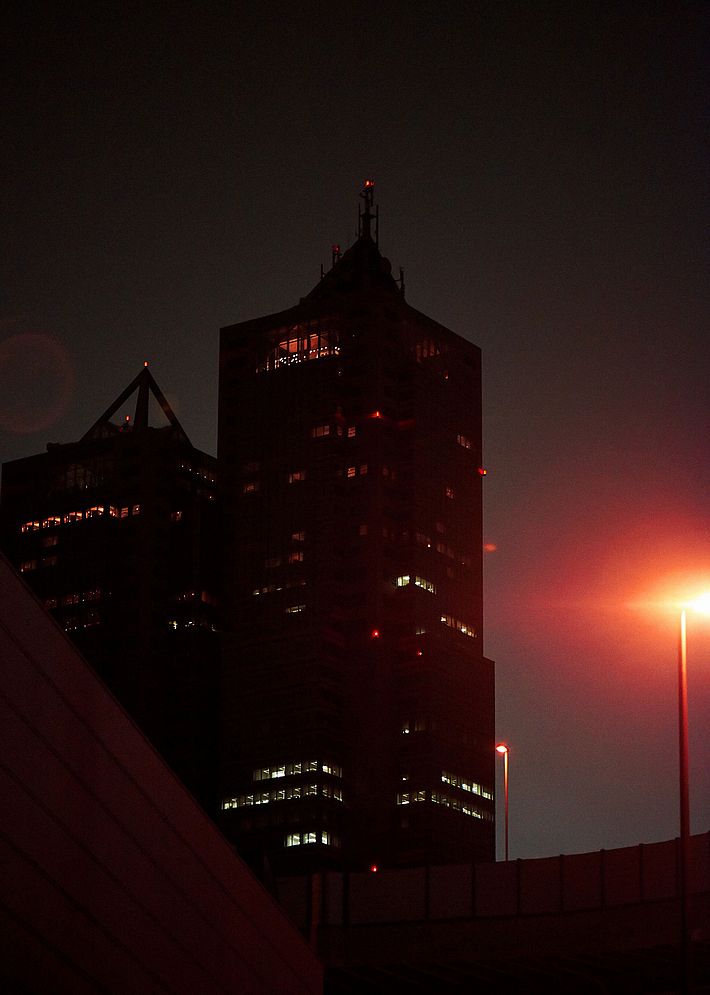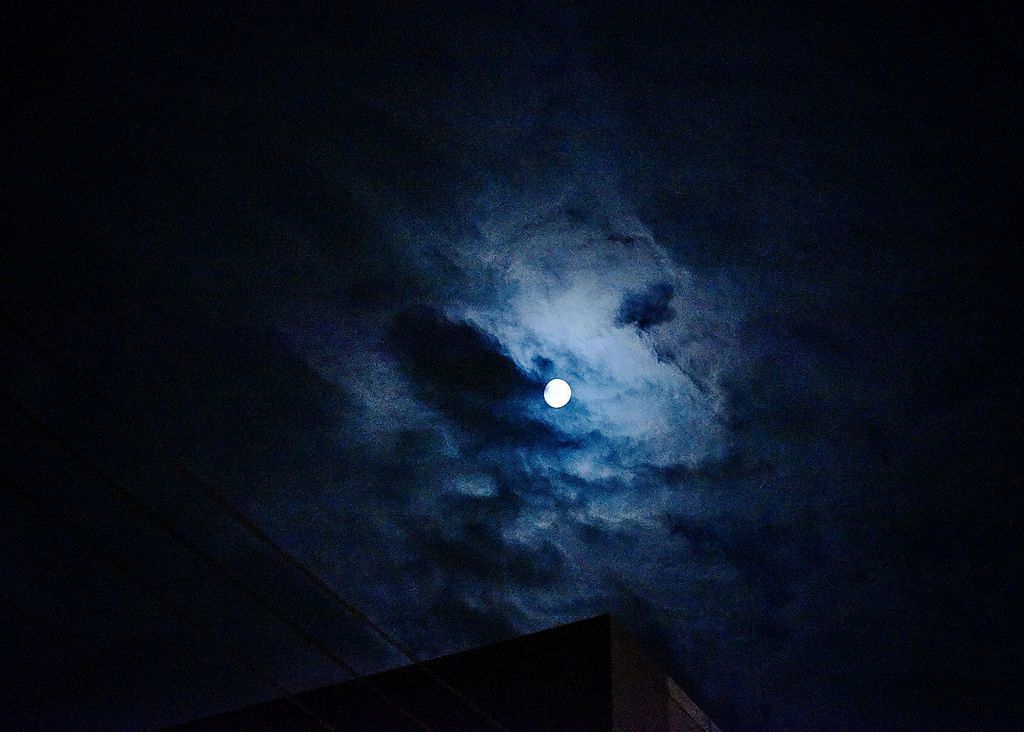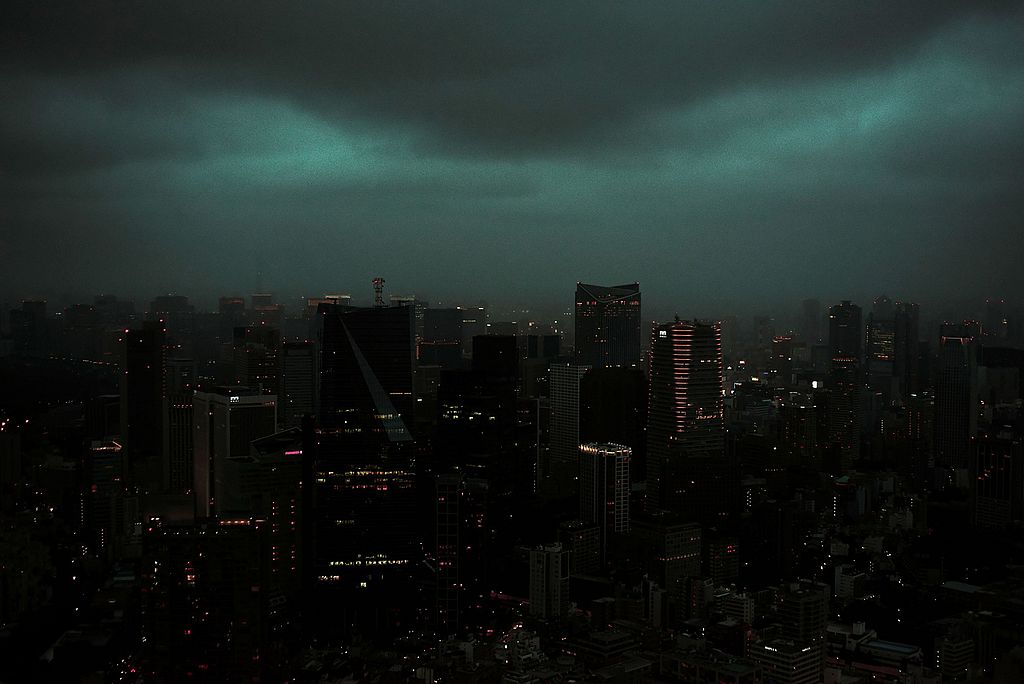Equality is the Key
Austin Zeiderman on cities caught between security and justice
Ever since the attacks on September 11, 2001, security has been back on the global agenda. But what really makes cities safer and what conditions do architects and urban planners need for their work? We spoke with the author of “Endangered City: The Politics of Security and Risk in Bogotá” about real and perceived sources of urban insecurity.

What is the connection between the architecture of modernism and the social problems within the cities of today?
Modernism imagined and created various kinds of institutions and infrastructures, some of which were physical and built, and some of which were not. These institutions and infrastructures were in part designed to mitigate risks, to equalize vulnerabilities, and to neutralize threats to collective life. I think this was on one of the central tenets of modernism. And you see it in things like public healthcare, social housing, environmental regulation, and concerns for occupational health and safety.
Today all of these infrastructures and institutions are somewhat under attack, and not necessarily from external threats, but often from within. They are being dismantled by the very same governmental agencies that were set up to safeguard or manage them in the first place.
This leads me to think that while certain aspects of modernism should be discarded or rethought, there are other modernist values, concerns, and concepts that are worth holding onto. And so rather than faulting modernism for creating or contributing to today’s social problems, I would rather focus our critical attention on the political decisions and historical conditions that are really to blame for the fact that modernism has not been able to fulfill many of its promises.
If we believe the current political narrative, then the task of politics is to defend against dangers: global warming, terrorist attacks, refugee crises. Voters reward alarmists in almost all democracies – especially in rural areas. Will Armageddon hit the cities later?
We’re used to thinking about authoritarianism, or authoritarian populism, and its mobilization of fear as being a rural, suburban, post-industrial, or non-urban phenomenon. In some ways, this is related to the role of urban centers within the global, political, and economic order and the concentration of resources, opportunities, infrastructures, and power in cities. The alarmist security politics that your question points to, and the alarmists who are rewarded with votes, do reflect the particular way cities have come to dominate the global economic order.
However, alongside the fear-based security politics that you mentioned, it is also worth noting the outsize attention given to protecting cities over and above rural areas, remote places, or the planet at large. There’s an interesting tension around the spatial politics of security and how they play out in different places and times.
My broader response to your question is that we shouldn't necessarily surrender the concept of ‘security’ to any one political position—especially not to the right, or to nationalist, militaristic, or authoritarian politics. To paraphrase Foucault, who said that progressive or radical forms of government had not yet been invented, we can say the same thing about security. That’s where I would like us to think more about the politics of security in the contemporary moment.

The terrorist attacks of September 11, 2001, seem like a turning point, even if there have been attacks in big cities around the world just as often before. How does the narrative of the vulnerable city affect the urban planning of the present?
One of the ways that I’ve thought about this question is, first of all, how the idea of the vulnerable city, or the ‘endangered city’ as I called it in my 2016 book, changes where we invest limited public resources. That’s one basic level at which security comes to affect urban planning. Once we start imagining the future of cities as vulnerable, as under threat, as at risk, this takes resources away from other important areas, such as housing, health, and education. What does it mean when those scarce resources get redirected to much more limited concerns, such as the basic goals of protection, preparedness, or even survival?
I also think it’s important to focus on how living in the vulnerable city, or the endangered city, changes our interaction with our public institutions, what we expect of them, and what we empower them to do. We might think about this in the sense of how the endangered city actually changes what it means to be an urban citizen. An example would be the ways in which we become empowered as citizens with rights in and through our engagement with questions of security, of vulnerability, of risk, and the degree to which our cities are increasingly organised around those questions. I think there is a key shift there.
There are many different ways of dealing with security in the city around the globe. If you compare the cities from Africa, Asia, or South America to the Western approach of security in the city: Could you give me a short description of what you see as being the main differences in approach?
I’d like to talk about differences as well as similarities. The way I would approach the question of difference is through what some Latin American thinkers have called ‘modernity/coloniality’. Here I’m thinking about the long history of uneven global development through which cities around the world, especially in the colonized world, were prevented from experiencing urban modernity in the same ways that the cities of the North Atlantic or the cities of the Global North did. You can see this historically produced inequality reflected in the domain of security, in particular in terms of the resources cities dedicate to it.
I think there’s also an argument to be made that we’re at a moment of real transformation, where the cities of the Global North are now struggling with threats and challenges that other places in what we often call the Global South have experienced for a very long time. The question of how to deal with a radically uncertain future is now highly relevant to the Global North, and this could be understood as an interesting inversion of the flow of thinking around urbanism.
I think if we start by recognizing the historically produced forms of inequality between cities, and the uneven geographies that are evident across the contemporary urban world, this leads us to an interesting global conversation. Many of the concerns that we’re thinking about these days fundamentally challenge and often transcend the Global North/Global South binary. To use climate change and current discussions of Anthropocene as an example, the lines dividing the North and South get in the way of important planetary conversations even as they mark real material differences.
![[Translate to English:] © Johannes Bauer (Tokyo 2017), studiojohannesbauer.com](/fileadmin/_processed_/f/8/csm_BH_now_2_Loesung_ist_Gleichberechtigung_Studio_Johannes_Bauer_Tokyo_04_66c2c1a336.jpg)
What must buildings or spaces that counteract prejudices look like?
I think we can begin by considering buildings or spaces that do the opposite, in the sense of creating or reinforcing prejudice. Defensive architectures or infrastructures often become blatant exercises in the criminalization of the poor and of racialized or minoritized others. I think if we want to see what buildings and spaces counteract prejudices, I think we should think first about the design and building practices that produce or reproduce already existing forms of discrimination and injustice.
However, in trying to think more positively about the question, I would suggest that we can also think about buildings and spaces that actually make visible and concrete the prejudices that already exist all around us. In other words, spatial design can make us pause to reflect on, debate, or even confront and change various prejudices that exist in societies. I have to leave it to the designers, architects, and urbanists out there to figure out how to do that, but I trust that they will come up with lots of really interesting and exciting ideas.
In a broader sense, I think this question points to the ways in which the politics of the built form is clearly an important topic for us to consider. But I want to be cautious about how much we think space can do in the social and political realm. If we’re interested in how buildings can counteract prejudices, the question then becomes how much we think the building itself can do. Of course this has already been a long debate within modernism.
That said, I don’t want to get away from thinking about the politics of space and of the built form, but I do want to question, or at least be cautious about, how much we think we can design or control the linkage between space and politics. How is it that buildings get invested with political power and social agency to have broader effects? That is a question I want to ask. This involves the designers, architects, and others who are spatially literate, but it also involves those who are trying to understand how it is that the social and political realm is constituted as well.
How many hours of sociology should an architecture student spend learning today?
I do think a serious engagement with sociology, anthropology, history, and geography is necessary. Many architecture students are already doing this, but mostly on a theoretical register, whereas I would like to see them pay at least as much attention to less sexy topics like research methodology, or to questions of research ethics and what we count as evidence. These are questions we often struggle with in the social and human sciences. How much do we need to know about a place or a topic, or a period of history, in order to say something about it? I think architects should be asking these methodological questions, like what does it mean to do long term field work as an architect? How does that influence the architect’s practice? How does that shape the kinds of proposals, plans, or ideas the architect comes up with?
But this question goes both ways: how many hours of architecture should a geographer, historian, sociologist, or anthropologist learn? There are some key things that I think can be learned by people coming out of my sort of training, such as how to develop a keen spatial sensitivity and awareness relative to broader social and cultural questions. Also, an engagement with the visual and the aesthetic are key things we in the humanities and social sciences can learn from architects. The imaginative resources that are fostered and encouraged within architecture schools are often somewhat lacking from our disciplines, where the emphasis is placed on what we can empirically document.

Which city is currently the best place to tackle the challenges of the future, and which ones are you more concerned about?
We may be able to understand more about the present and the future of the global urban world from a place like Bogot. than we can from London, Paris, Berlin, New York, Tokyo, and so on. I might be more concerned about these places than I am about the Bogot.s of the world for they are more entrenched in certain legacies of thinking and modes of urban habitation, consumption, transport, and resource dependency that are precisely what has gotten the world into such a dire situation. I’m concerned about the inadequacy of those legacies of thought and modes of living that many of the so-called great modern cities are stuck in.
That said, I don’t want to be too romantic about the persistent and massive global inequalities between these places. After all, a city like New York was able to recover from something as devastating as Superstorm Sandy, or something of that scale, in a fairly short span of time based on the resources that are there at their disposal.
How safe can a city be?
I do think that these questions are fundamentally important and I don’t want to dismiss them simply because the idea that any city can be fully, completely, or permanently safe is a fiction. That said, one of the things that concerns me most about security as an ideal or value that is central to the urban imagination is that the demand for security can never be fulfilled.
We can never be fully safe or secure. I don’t know what to call that particular paradox, but it’s one in which you can never actually fulfill the demand for a safe and secure city, which produces more demands for the safe and secure city, and the only demand you can ask of that city is simply for more security and safety. That’s my concern about the ways in which security always produces demands for more of the same thing in ways that other urban values or ideals do not.

What do you want a city to be?
Equality would be one of my answers. Let’s think through the ways in which the equal city and the demands that get organized around it actually work differently from other models or ideals. I think this is getting back to the question of the modern, or of modernism. You know, modernism involved a set of political promises that remain really important. The modern infrastructural ideal was one of those, and equality was central to it.
A city that provides housing, infrastructure, or other benefits to everyone has probably never really existed, and yet it still remains an ideal that we need to hold onto for practical or political purposes, I think. There is something similar here to the ways that security functions, in terms of being a constantly unfulfilled political promise that can only produce demands for more of the same. But when the ideal is the equal city rather than the secure city, the outcome may be much more positive.
headline
Mr. Zeiderman, thank you very much for the interview!
This article was originally published in the second issue of the “bauhaus now” magazine.